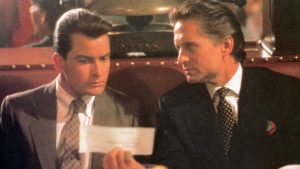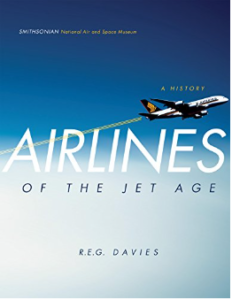The book What I learned about investing from Darwin (2023), by fund manager Pulak Prasad (Victori review here), gave me the idea of sharing what I learned about investing from art. There are many ways of categorizing art forms, including (but not limited to) literature, photography, digital, cinema, painting, and music. Below I discuss some key lessons I’ve learned from each of these art forms.
Literature
Money is an important part of society, so it’s not surprising that many literary classics that mirror society have offered insights on money matters, including Kafka’s Metamorphosis (1915), Fitzgerald’s The Great Gatsby (1925), Melville’s Moby Dick (1851), Poe’s The Gold-Bug (1843), Rand’s Atlas Shrugged (1957), and Aesop’s Fables (4th Century BCE).
One of my favorite lessons comes from Franz Kafka’s The Metamorphosis, where a travelling salesman, who lives with his parents, morphs into a disgusting bug. His family treats him well early in the story, but eventually they turn on him and starve the bug until it dies of hunger. There have been many diverse interpretations of Kafka’s famous novella over the past century, but my take is fairly simple and investment related: The bug represents a stock in the portfolio which morphs into a value trap. At first the investors buy more of the stock because they loved it when it traded at higher prices, so why not buy it at a discount? But eventually they are relieved to blow it out, even though they loved it all along.
Photography
One of our analysts, Robert Vámos, is an avid photographer (link), and I know other avid investors who are photographers. While I don’t do much photography these days, it was my favorite activity in high school, where I was the photography editor of the yearbook, took my camera to school pretty much every day, and spent untold hours in the darkroom. I’d say my greatest learning from this experience and how I appreciate photographic art is the importance of angle, depth, and perception. Two people photographing the same subject at the same time can come up with completely different photographs.
One of the investment insights I take from Robert’s photographs, which in some ways resemble that of Ansel Adams and Sebastião Salgado, is that many of nature’s most beautiful features get ignored by purposeless eyes. Tolstoy had the same thesis regarding what makes history. Whereas most historians tend to focus on the big events, Tolstoy argued that history is made in the trenches. Likewise, every stock has superficial features that most can see and analyze, but the most precious information comes from studying how a few converging factors evolve over long stretches of time.
Digital
I have also learned about investing from a high school friend who is a contemporary artist. Mark Engel produces amazing digital art (link), where he typically distorts real images into colorful schemes. In his latest exhibition I attended in Manhattan, he previewed a small sample of pieces that he will be showing in Portugal this June. It is called The Death of (tomorrow). This series consists of 40 thousand variations of a recurring theme. As with any art, the interpretation is up to the viewer, and one of the ways I interpreted it as a practicing investor is that stories that seem similar on the surface may in fact be completely different, depending on how one looks at them. People who put too much weight on peer analysis for determining the earnings multiple that a stock should trade at, for example, do not seem to appreciate this idea, for they focus only on one interpretation of the available information.
Cinema
The history of the movie industry teaches the importance of reputation, experience, talent and quality, but also the downside of what one of my early mentors called “analysis paralysis.” Stanley Kubrick was a great filmmaker, yet many claim that his greatest work was one he never actually realized: Napoleon. He researched this film for two years, working with dozens of historians and advisors, but MGM and United Artists turned it down because his vision for the project was simply too big.
Another example is Quentin Tarantino’s Double V Vega, where the filmmaker devised the movie’s premise and picked the actors (John Travolta and Michael Madson), but never took it any further. Yet another example is Sylvester Stallone’s Edgar Allen Poe movie. After spending two decades trying to bring the movie together, writing the script and hiring Robert Downey Jr. as the lead actor, Stallone never made the movie.
The analogy to investing is clear. Some people dig deeper than others, but it is impossible to know everything about a company. Eventually, and on incomplete information, one is well advised to make the decision either way, or she will end up never buying or selling anything.
Painting
In one of our blog posts titled Stocks and Nudes Descending Staircases (link), I wrote that one should want to own companies that have gotten stronger than competitors – but you need to make sure they will continue to get even better as they get bigger. Compounding is largely about sustaining such motion through time. To illustrate this concept I prefer a painting analogy, as uniquely expressed by Marcel Duchamp’s oil on canvas, Nude Descending a Staircase, No. 2 (1912). Duchamp’s painting captures the notion of movement through successive, superimposed images, similar to stroboscopic motion photography. The effect is a stunning representation of motion in static form.
As Pulak Prassad states in his fantastic book, excessive focus on robustness by a company can compromise its growth. If a company or economy does not grow over the long term, they are unlikely to be great investments. In painting, rigidity tends to compromise creativity.
Such tradeoff applies not only to painting and investing, but also to aerospace engineering, where strength compromises weight; to electronics, where power compromises temperature; and to parenting, where strictness compromises self-esteem. Similarly, investing is an art of tradeoffs between quality and price, long term versus short term, knowledge versus intuition, and risk versus reward.
Music
There are several lessons from music, but one of my favorites relates to how social influence determines which songs become hits. The Music Lab experiment, which Mauboussin discusses in Think Twice (2009), provides a good example of this phenomenon. Researcher Duncan Watts, of Columbia University, created a website called Music Lab with 48 unrated songs by unknown bands. He first asked thousands of participants to download their favorite songs without knowledge of how many downloads each song had already received. Then he used ten large groups of separate participants which were asked to do the same, but this time with knowledge of how many downloads each song had received.
Anyone who knows about search engine optimization or the music industry would not be surprised to learn that the groups in the Music Lab experiment with information on the number of downloads tended to like the songs that others in the first group had also liked. The same thing can be observed in the stock market, when people chase stocks that famous investors have picked, while lesser known stocks are often the ones that provide the best returns.
In closing, there is much that can be learned from multiple forms of art, and I would even take it a step further and claim that an eye for art makes one a better investor. Looking at art forces us to slow down and separate from the current moment. We also end up developing the skills of closer observation, thinking differently, asking questions and embracing new ideas.










